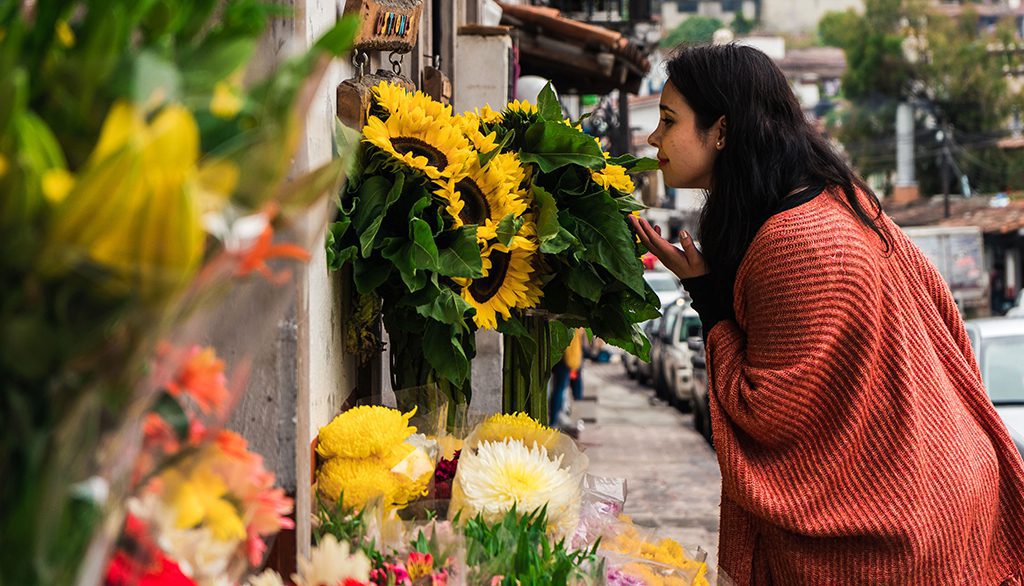
When it comes to marketing flowers, a one-size-fits-all strategy doesn’t work across age groups. Instead, it’s essential to tailor messaging to attract customers based on buying preferences, which tend to be generational.
That’s among the findings of a study recently released by The Floral Marketing Fund, whose mission is to increase flowers sales through collaborative fundraising, research, and marketing efforts.
“Everybody is not going to be your customer, and you have to know that,” says Julie Campbell, an assistant research scientist of horticulture at the University of Georgia and one of the study’s three authors.
The study, “Increasing Demand and Customer Satisfaction in the Floral Industry,” is based on two separate surveys. One survey of 1,000 people in the southeastern United States was conducted in July 2020, and another survey of 8,000 consumers nationwide was conducted in June 2021.
Campbell and her colleagues focused their research on better understanding the traits and characteristics of people who purchase flowers.
Age Matters
The study found that age is the biggest factor in where, how and why consumers buy flowers.
Baby Boomers and older generations were less likely to purchase or receive cut flowers in the last year compared with Gen X and Millennials (41 percent vs. 53 percent). Campbell hypothesized this could be because of the COVID-19 pandemic, but it might also reflect broader differences in buying habits of younger generations.
For instance, even as the pandemic restrictions lift, Millennials and Gen Xers were more likely to indicate they would purchase cut flowers within the next year than Baby Boomers for most gift-giving occasions. The study also confirmed other trends, including Millennials and Gen Xers are more willing to shop online than their older counterparts.
The marketing team at Welke’s Florist in Milwaukee, Wisconsin, considers age when they are deciding how to market products, says vice president Nikki Lemler, AAF.
“If we have something fun and trendy we post that on reels,” Lemler says, because that’s where the younger generations will see the product. For products such as holiday arrangements, the shop targets an older generation with a mailed flyer because they believe it is the best way to reach that demographic, Lemler says.
The customer base for UrbanStems, an online floral retailer that entered the marketplace seven years ago, has always skewed to younger generations, with the majority being those age 45 and younger, says CEO Seth Goldman. But that doesn’t mean they don’t have or aren’t seeking to tap into the older buyers.
While UrbanStems embraces its online only marketplace, Goldman says that just provides the broad strokes of where to go find potential customers. Tailoring creative messaging, site experience and service are also key to success.
Identifying Buying Traits
The researchers wanted to discover which attributes of a flower drove purchasing decisions. Attributes included a combination of vase life, origin and price. While few respondents indicated that any one of those attributes was more important than another, 47 percent of respondents were “non-discriminatory.” That segment was likely comprised mostly of Millennials, the study says.
But the largest segment may not be the right group for a retail florist to target, Campbell emphasized.
Instead, she says a local retail florist that specializes in sourcing and selling locally grown flowers, should have a very different marketing strategy from another who is committed to offering customers on a budget the lowest price.
The study found that 10 percent of the market is concerned with flower origin and interested in U.S. grown stems. This segment tends to be Millennials. But another 8 percent of the market will only buy U.S. grown flowers, this segment tends to be white Baby Boomers, according the study.
Beyond price, origin and vase life, Goldman of UrbanStems, suggested two other traits that his company finds are important to customers: availability and speed of delivery. Goldman added that they rely heavily on technology, website experience and logistics. UrbanStems operates nationwide and currently offers same-day delivery in New York City and Washington, DC.
UrbanStems also offers a subscription service as a marketing strategy to capture younger buyers who are accustomed to subscription-based models for other products and services, such as Hello Fresh for food and Rent the Runway for clothing.
Focus on Benefits
Promoting the benefits of cut flowers is a successful strategy in advertising products, the study found. By emphasizing the positive health benefits and the joy and happiness that flowers bring, florists can capture the attention of potential buyers. This messaging is more impactful than simply showing consumers displays of cut flowers, according to the survey.
“It changes your feeling, the way you feel about your surroundings,” Campbell says. “It changes the whole dynamic of a room. … That’s the stuff you need to capture.”
Additionally, embracing the positive words and feeling that people already associate with flowers can help augment any ad campaign.
Researchers asked participants for one word that came to mind when they thought of flowers. The resulting word clouds revealed frequently used words such as “smell,” “good,” and “pretty.” But it also revealed prevalence of other words such as “allergy,” “bug,” and “water.”
The largest negative word was “none,” which the researchers suggest means many consumers see no advantage to having flowers. That’s why educating them on the benefits could help shift perspectives, Campbell says.
Through education and thoughtfully tailored messaging, Campbell says florists can use insight from the study to grow business.
“This is a specialty market. It’s not like a necessity type thing — you don’t have to have a bouquet of flowers,” she says. “But no matter what you do there are people who want a particular specialty product. You just have to identify them.”
Check back next week to learn more about each generation’s buying habits, and how florists can use that information to target their marketing.
Sarah Sampson is a contributing writer for the Society of American Florists.

